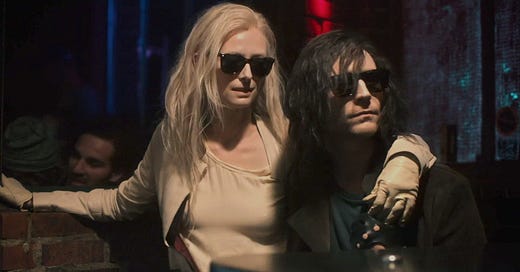In 2006, John took a look into how we’re willing to suspend our disbelief about supernatural creatures and certain mathematical concepts.
I spent the flight home from Colorado reading Barry Mazur’s Imagining Numbers, which looks at how we might best conceive of imaginary numbers, those uncomfortable gremlins that occur when you start looking for the square root of negative numbers.
The book was only okay. It tried to be history lesson, philosophical study and math review all at once, and in its scattershot approach never quite achieved its stated thesis.
But one benefit of a mediocre book is that one’s mind is free to wander. Over the course of reading Mazur’s book, I decided:
To paint a giant number line on my daughter’s playroom wall.1 Addition and subtraction make a lot more sense with some geometry behind them, and Mazur’s description of numbers as verbs rather than nouns is revelatory.
The sense of needing “permission” to do something is generally an indication of an unasked question: “What would happen if I did take the square root of a negative number,” or “What if my protagonist could hear the voice-over narration?” (c.f. Stranger Than Fiction)
Vampires are the imaginary numbers of modern literature.
This last point merits further elaboration.
Vampires do not exist. That is, they do not exist in the same way you or I do. You’ve never met an undead blood-sucker, and neither have I. Yet we can both agree on quite a few characteristics of these non-existent beings:
They drink blood.
They avoid sunlight.
They’re strong.
They are undead and undying, except by special procedures.
This checklist is by no means complete: different writers may choose to add or subtract abilities. Shape-shifting and hypnosis were once pretty common traits that have all but disappeared from the modern vampire. Likewise, flight and coffin-sleeping seem to be on the wane.
In films, books and television, you can find urban vampires, feral vampires and even white-trash varieties. Yet the sense of “vampire-ness” seems fairly fixed. Here’s a test: grab a random teenager and ask him how to kill a vampire. Then ask him how to change a tire. I suspect the more complete answer will involve a wooden stake.
So how are vampires the imaginary numbers of modern literature?
Neither vampires nor imaginary numbers exist, yet we treat them like they do, simply because it suits our purposes. Imaginary numbers let us posit hypothetical mathematical scenarios; vampires let us imagine hypothetical human scenarios. Want an addiction analogy? Vampires. Epidemic? Vampires. Alienation? Vampires. Need to have your protagonist exist both now and two hundred years in the past? Just make him a vampire.
Modern literature has substituted vampires into every conceivable genre. And I don’t think it’s any accident that our bitey friends have become the go-to supernatural beings. Werewolves are only part-time monsters. Ghosts lack a consistent mythology. Vampires, well, they’re just like us.
But different. They’re imaginary numbers, who can’t be reduced beyond their glamorous other-ness.
I haven’t written a vampire movie yet, but the key word is “yet.”2 I came close last year, and it’s almost a given that I will at some point. It’s like a screenwriter’s rite of passage. And when I do, I intend to invoke some serious calculus on that shit.
Are you enjoying this newsletter?
📧 Forward it to a friend and suggest they check it out.
🔗 Share a link to this post on social media.
🗣 Have ideas for future topics (or just want to say hello)? Reach out to Chris via email at inneresting@johnaugust.com, Mastodon @ccsont@mastodon.art, or Threads @ccsont@threads.net
2023 Update: I never painted a timeline on my daughter’s wall, yet she still grew up with a solid sense of numbers. I credit this largely to her Common Core math curriculum in elementary school, including some absolutely confounding worksheets. They instilled a solid sense of what numbers actually represented, and the relationships between them.
2023 Update: I’ve now written two vampire projects. One was produced, and the other is in development.




